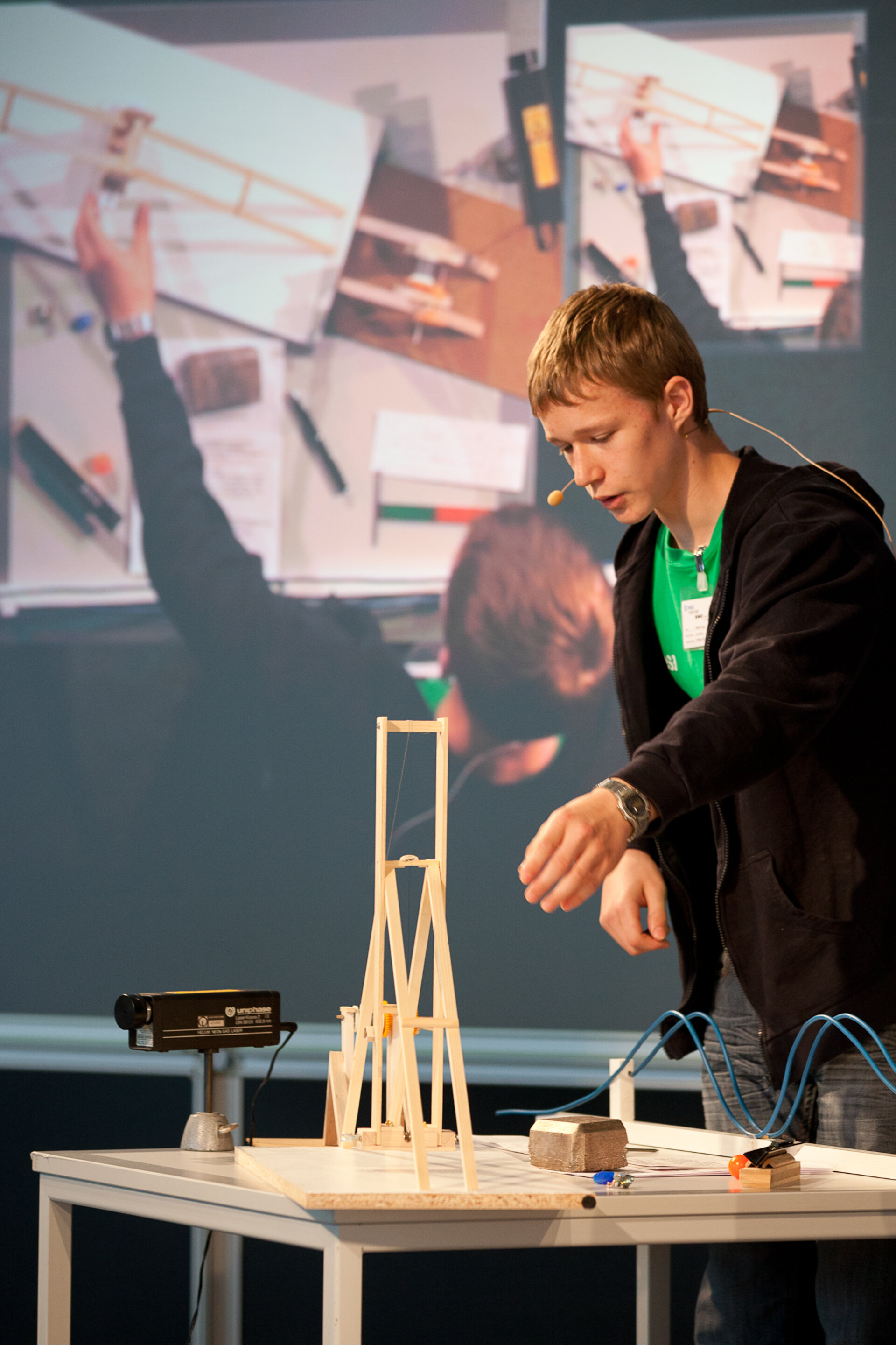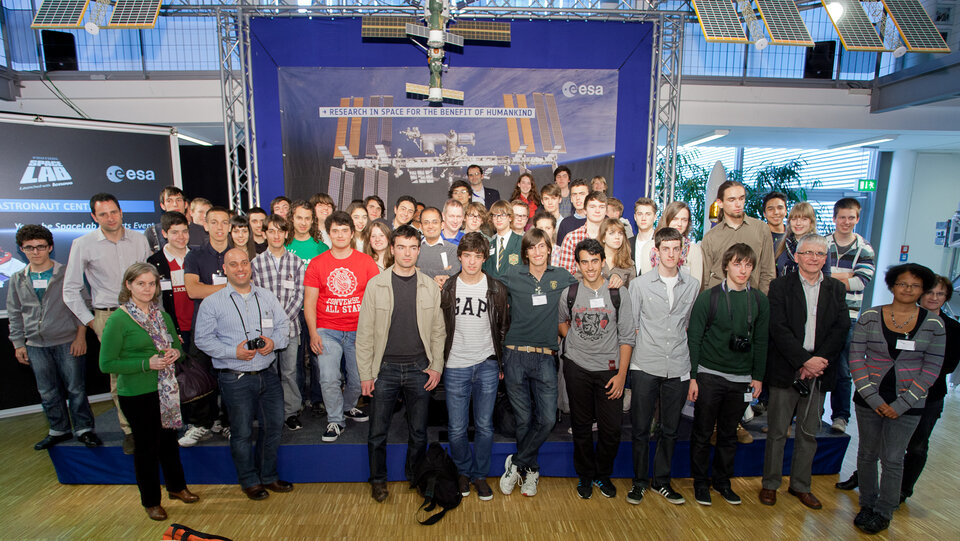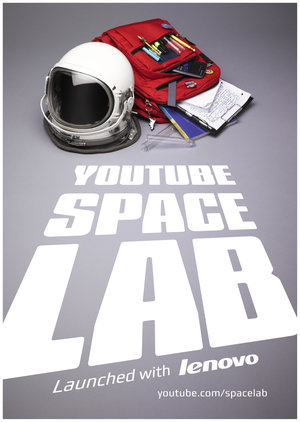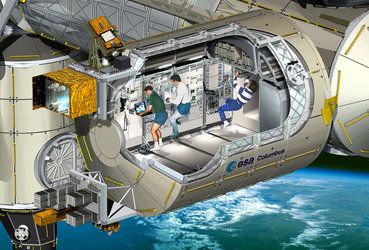Space and science meet online for youngsters
What happens when your experiment gets over 30 000 views online? Tomorrow’s space explorers were awarded an out-of-this-world scientific exchange with astronauts on the International Space Station last Wednesday.
Youngsters from Europe, the Middle East and Africa were invited to the European Astronaut Centre in Cologne, Germany, for a live chat with ESA astronaut André Kuipers and NASA astronaut Don Pettit.
The prize was well-deserved: only 21 videos out of the 2000 submitted made it to the regional final of the YouTube Space Lab competition.
The students had to squeeze scientific demonstrations into just two minutes of video and suggest what would happen in space with an identical experiment. The videos have been viewed over 50 million times.
This educational initiative supported by ESA “Gives ordinary kids an extraordinary opportunity to make reality greater than fiction,” says Zahaan Bharmal of Google and founder of the Space Lab campaign. He shared the thrill of his first call to the Space Station with the students.
The future depends on you
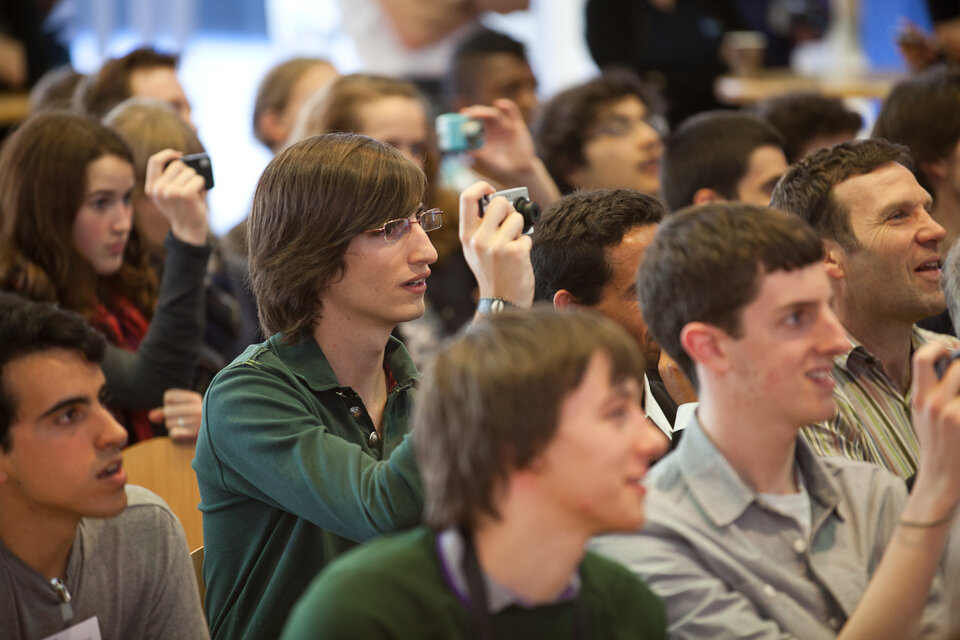
André and Don answered questions from the finalists, and demonstrated the privilege of working in the world’s largest weightless laboratory on a wide range of scientific fields.
After André relieved doubts about risks related to human physiology in space, Don assured the students that, “Exploration is going to depend on you, on what you want to do with your own future.”
Global finalist Amr Mohamed, an 18-year-old student from Alexandria, Egypt, will see how spiders catch their prey in microgravity.
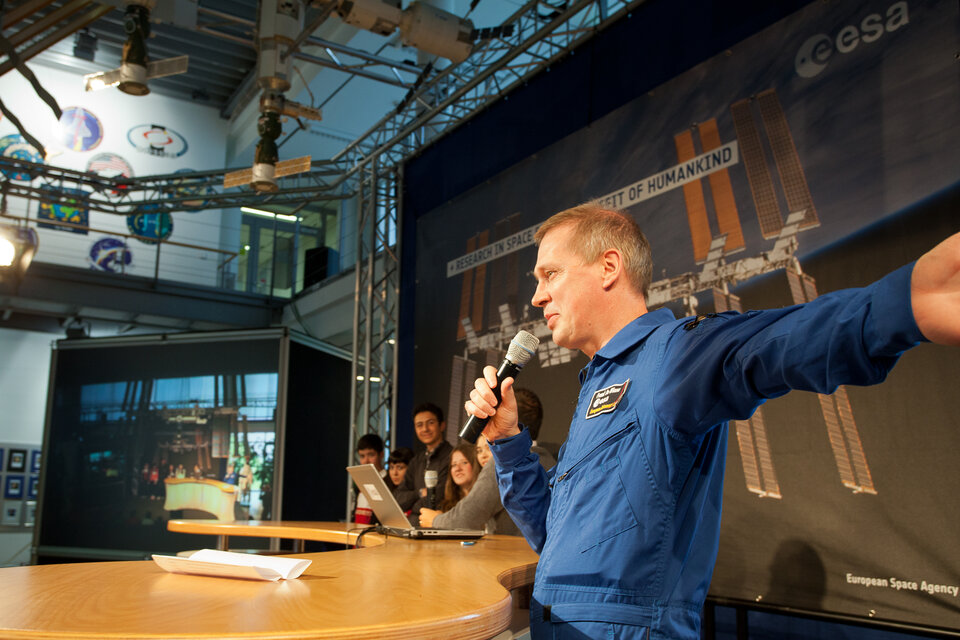
On the ground, ESA astronaut Frank De Winne challenged Amr: “If it took me around two months to fully adapt to weightlessness, how long will the spider need to learn how to jump on its target?” The answer will come this autumn, when Amr’s experiment is conducted on the Space Station.
Other finalists came up with innovative ideas to send to the Station as well, involving yeast-powered space travel, alcohol production and magnets.
In some cases, it took the young scientists three weeks to research and set up their experiments. For others, like Harry and Jack, five minutes before a physics class were enough to film their idea.
Scientists and astronauts were impressed by the variety of ideas and the different backgrounds of the participants. “Sometimes I had to stop the video and reflect on the experiment!” admitted Martin Zell, ESA’s Head of ISS Utilisation and Astronaut Support.
After a hands-on tour of Europe’s astronaut training facilities, there was no doubt that space fuels students’ fascination for science, technology, engineering and mathematics. “This space experience will stick in their minds forever,” concludes Martin.


